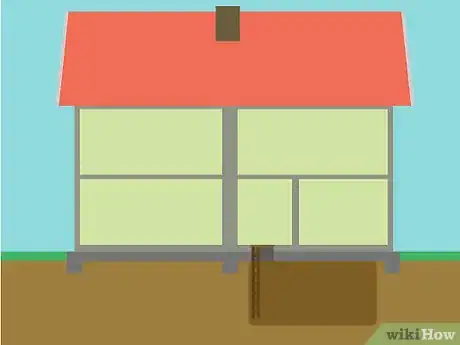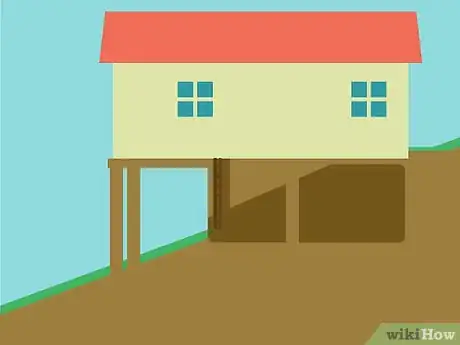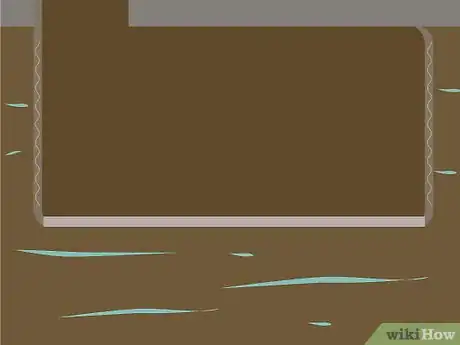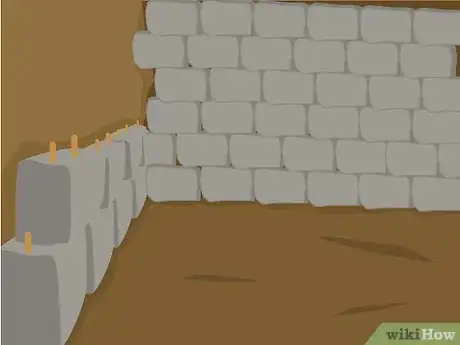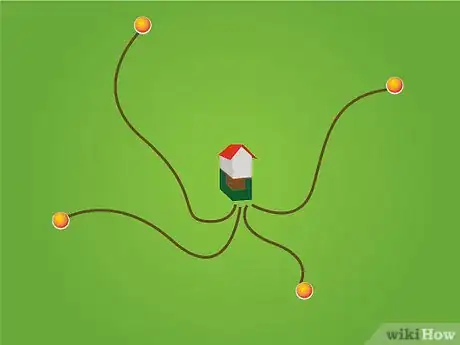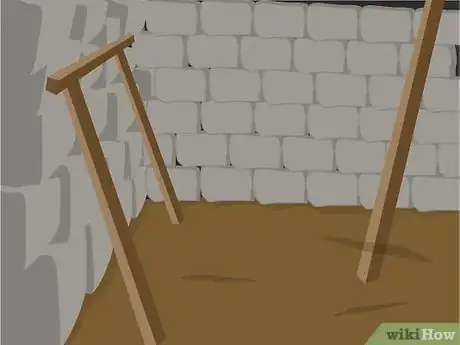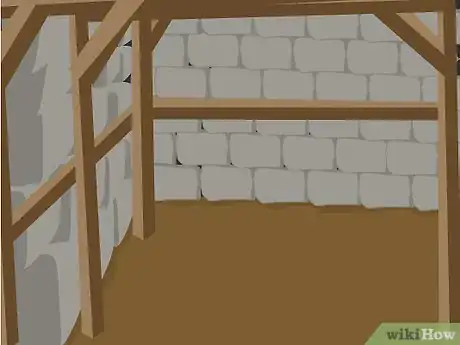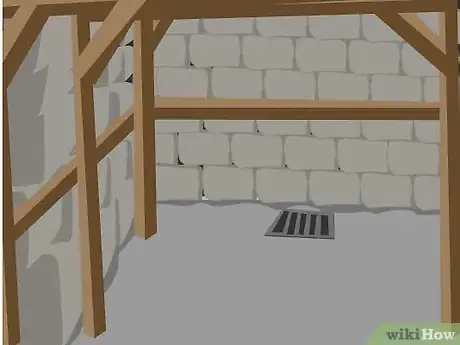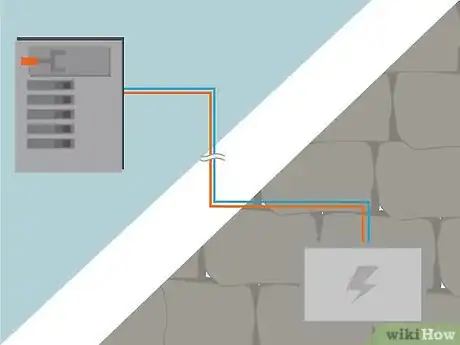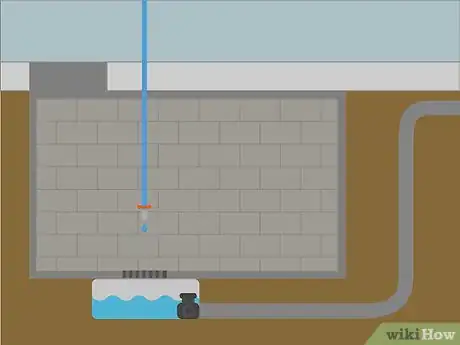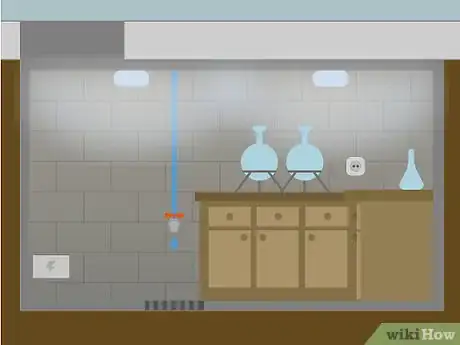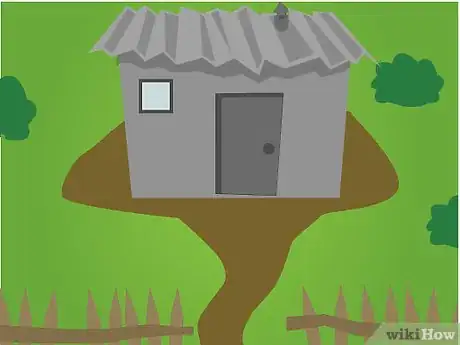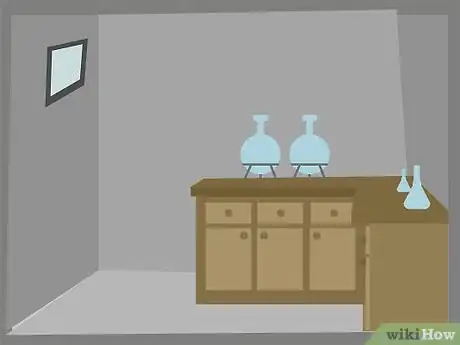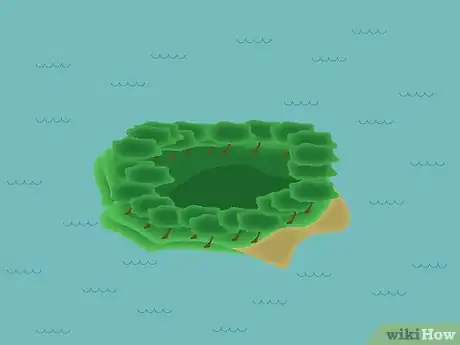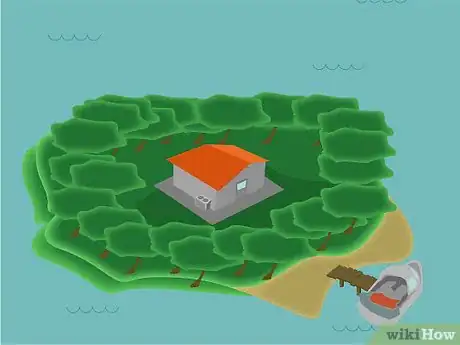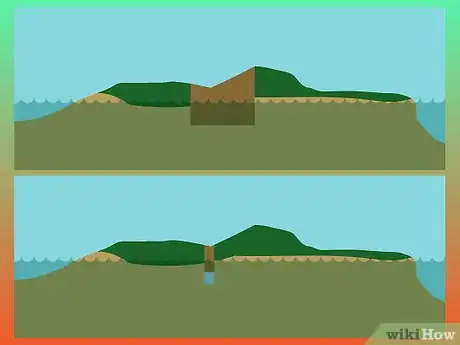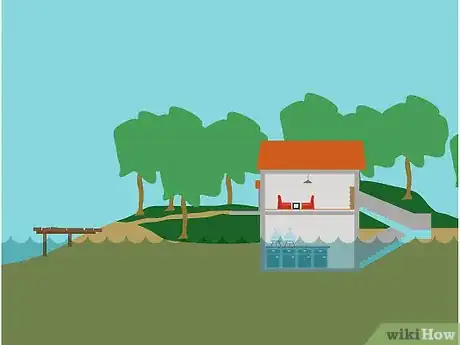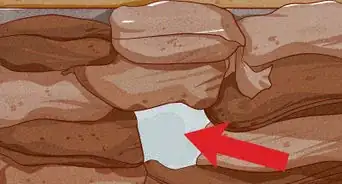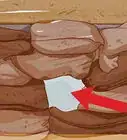wikiHow is a “wiki,” similar to Wikipedia, which means that many of our articles are co-written by multiple authors. To create this article, 38 people, some anonymous, worked to edit and improve it over time.
This article has been viewed 230,460 times.
Learn more...
For the mad scientist in all of us. The key to successfully building a secret lab is secrecy! This how-to expects that you absolutely trust the people who live in your house, or the house where the lab is being built. You can't hide it from them. Also, to follow this wikiHow, you'd have to be mad. This isn't safe to do yourself unless you actually know what you are doing, and then you wouldn't be reading this, would you?
Steps
Basement Method
If your house has a basement, consider building a false wall with a secret door for access. This is the safest and easiest method. It is also least likely to break any laws. See How To Build A Hidden Door Bookshelf.
Under the House Method
-
1Learn something about building foundation engineering. This doesn't mean get a degree, but what good is a secret lab if it caves in on you, especially if it takes your house with it?
-
2Build under the house.
- If the house doesn't have a basement, but has a foundation, you can cut through the foundation and dig out a new 'basement' for your lab. This is where the engineering knowledge comes in handy. Depending on local laws, this is also likely to be illegal without permits, and very very difficult to get approved for a permit. See How to Dig Out a Basement in an Existing House.
- If the house is a stilt house, there is less hassle in legality, but just as much engineering knowledge required to ensure the house doesn't slump or crumble down around you. Digging out the crawlspace to a decent height for walking around in is the method here.
Advertisement -
3Decide on an entrance method. Secret door, false closet back wall, 'trap' door in the floor, classic bookshelf-door, stairs or ladder? A ladder takes the least floorspace from your excavation, but makes it very hard to bring in equipment and furniture. Stairs can take up a lot of space, but under-stairs storage can be very handy. Consider putting in two exits.
-
4Study basement construction techniques, making sure to pay attention to drainage and water penetration issues, as well as construction materials. Keep in mind that a huge truck pumping large quantities of concrete can be replaced by slow-setting concrete and a lot of endurance mixing it and pouring it yourself. Procrastination is not an option when it comes to cement.
- Also study older construction techniques that have held up over the ages. If you have the time and supplies (and strength) you could build a rebar-reinforced granite wall by drilling through large granite blocks and connecting them with rebar through the holes, then seal with concrete. This combination of old and new will yield a strong wall that has a classical dungeon look to it.
-
5Obtain necessary materials slowly and inconspicuously, preferably from towns or cities 2 to 4 hours away. Collect materials in a hidden area, possibly a storage unit rented in a near-neighboring town, under a pseudonym if you can.
-
6Make sure you have somewhere to put the excavated dirt. This isn't a video game; dug out dirt doesn't just disappear! Large mounds of dirt in the back yard are sure to raise questions, though if you start a parallel garden makeover and spend time landscaping with the dirt, the questions are answered. More work, but more secrecy. One idea is to build a terraced garden, with levels held back by retaining walls (see How to Build a Dry Stack Retaining Rock Wall).
-
7Shore up your dirt walls. Dirt always wants to settle, so make sure it is braced to stay in place as you dig! This is especially important in areas and seasons with a lot of rain. You cannot over-shore!
-
8Ensure structural support if you are tunneling to make a larger lab than your initial downward hole. This is related to shoring, but even more important. Failure here can mean death. Tunneling is not recommended unless you are a skilled tunnel engineer used to designing permanent tunnels like subway systems.
-
9Make sure your walls are structured enough to hold back the dirt, hold up the structure above, and keep each other from falling inwards. Integrated beams between the walls can help maintain outward structural pressure, sacrificing a little headroom for safety.
-
10Pour your new lab foundation same as any basement, ensuring a drainage route for flooding.
-
11Provide power to your lab. Pull multiple taps off of several existing bedroom circuits (if newer wiring) or tap off of the least used house circuit (if older wiring). Know your house wiring techniques before doing any wiring, there are many books on the subject. If your lab power needs are too great for this wiring, get a new circuit installed by a licensed electrician, claiming for a high-power requirement laser printer, electric tankless water heater, new dryer, or power tools, depending on where the circuit will go, then tap off of that.
-
12Consider plumbing. While building, you might find yourself face-to-face with the guts of your house's plumbing while digging. If so, you are in luck, as you can quite easily tap off of these lines for source water. If you've also found your sewage line, that's good, but if you are below the level of the sewage line, you'll need to store and pump wastewater up to it. The waste tank will take up some of your precious excavated floorspace, and the pump will take up power. If your experiments need no water, you might consider not plumbing.
-
13Light your lab. Consider getting 'daylight' or 'full spectrum' bulbs for to avoid the life-force-sucking effects of normal fluorescent (office) lights. These can be obtained and used with extension cords during the excavation steps, and permanently installed at this step. See How to Make a Windowless Room Appear Light.
-
14Do any finishing (non-structural) construction you want. Two-by-Fours and Drywall, paint, workbenches, anti-fatigue mats... whatever you need to make your workspace functional. Bring in your equipment, and discover what knowledge you've been chasing!
Secluded Building Method
Island Method
-
1Buy a private island. Make sure you have a good budget before considering this.
-
2Grow some tall plants or even trees around the area you plan to build on. This is important, since this is supposed to be a SECRET laboratory. If you want to, you can also put a large pond around the area. This can take a while.
-
3Since you will likely have insufficient funds to build the lab once you have done the above, try saving for about a year or more, depending on how much money you get per week/month on average.
-
4Once you have recovered your funds, build the laboratory. Make sure the area is well hidden by the plants/trees, or the pond if you made one. Building the lab underground is likely not an option, since there could be bodies of water underneath the surface.
-
5If you insist on building underground, dig a hole at least 10 feet (3.0 m) deep. Make sure that this is allowed, though. If not, you must risk building it on the surface.
-
6If there is no water and you have dug 10 feet (3.0 m) into the dirt, you're good to go. If there was water within the depth, building on the ground is your only option, so make sure the plants hide it well.
-
7Build your lab. Refer to the other methods for building ideas.
Community Q&A
-
QuestionCan I build a lab on my balcony if I don't need it to be a secret?
 Community AnswerNo, it will still attract attention. Also, dangerous vessels might fall off. And If you must use it, you need to consider the size of the balcony.
Community AnswerNo, it will still attract attention. Also, dangerous vessels might fall off. And If you must use it, you need to consider the size of the balcony. -
QuestionCan I build a secret laboratory in my room?
 Community AnswerA room is not a good idea, because people would be constantly looking or coming in. A closet IN your room would be a better idea. If you don't have room in your closet, then under your desk would do.
Community AnswerA room is not a good idea, because people would be constantly looking or coming in. A closet IN your room would be a better idea. If you don't have room in your closet, then under your desk would do. -
QuestionCan a tree house be used as a lab?
 Community AnswerDefinitely - as long as it is somewhere out of the way; if you are a child, you can have a tree house in your yard, and nobody will question you.
Community AnswerDefinitely - as long as it is somewhere out of the way; if you are a child, you can have a tree house in your yard, and nobody will question you.
Warnings
- Flooding can ruin your lab. You might want to read up on How to Waterproof Your Basement.⧼thumbs_response⧽
- Remember, this is not a movie or a game. This is reality. If you happen to find police or a group of agents coming to your lab or island, this is not a good thing. Getting caught may seem exciting and heroic in movies, but in reality it means big trouble for you, and your life may be ruined by it.⧼thumbs_response⧽

